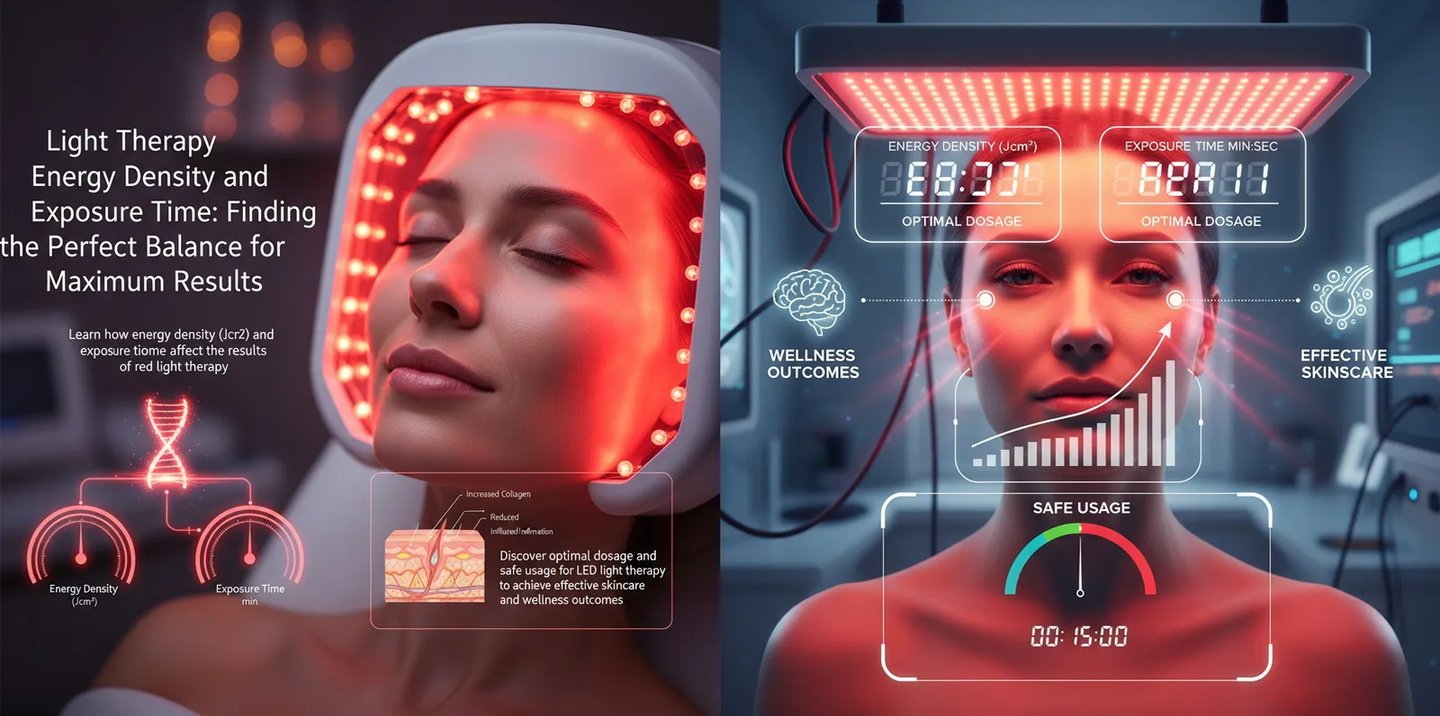Becoming the world's leading health appliance brand, bringing "professional physiotherapy home," and making a healthy life easily accessible.
Light Therapy Energy Density and Exposure Time: Finding the Perfect Balance for Maximum Results
Learn how energy density (J/cm²) and exposure time affect the results of red light therapy. Discover the optimal dosage and safe usage for LED light therapy to achieve effective skincare and wellness outcomes.
PHOTOTHERAPY BASICS > POPULAR SCIENCE EDITION
YEEQO
11/1/20252 min read


1. Why Energy Density and Time Matter in Light Therapy
In red light therapy, the “dose of light” determines the effectiveness of the treatment. This dose is based on two core factors:
1️⃣ Energy Density (J/cm²)
The total amount of light energy delivered per unit area.
2️⃣ Exposure Time (minutes or seconds)
How long the skin or tissue is exposed to the light.
Too little energy provides no noticeable benefit. Too much or too long can lead to overstimulation or mild irritation. Finding the optimal balance between these two variables is the key to safe and effective light therapy.
2. Understanding Energy Density (J/cm²)
Energy density represents how much light energy is delivered to your skin. It can be calculated as:
Energy Density (J/cm²) = Power Density (mW/cm²) × Time (seconds) ÷ 1000
Example Calculation:
If your device emits 50 mW/cm² and you use it for 200 seconds (3.3 minutes), the total energy density is 10 J/cm².
Ideal Energy Ranges:
For most red and near-infrared light therapy applications, an energy range of 4–20 J/cm² is ideal.
Low doses (4–8 J/cm²) → Skincare, mild relaxation
Medium doses (10–15 J/cm²) → Collagen boosting, cell repair
High doses (15–20+ J/cm²) → Deep muscle and joint recovery
3. The Role of Exposure Time
More time doesn’t always mean better results. Cells follow a biphasic dose-response, meaning:
Moderate exposure stimulates mitochondria and promotes healing.
Excessive exposure may reduce cellular activity or cause diminishing returns.
Recommended Exposure Times:
ApplicationTime per SessionFrequencySkincare & Anti-Aging5–10 min3–5 times/weekNeck & Shoulder Relaxation10–15 min3 times/weekMuscle Recovery15–20 min3 times/week
4. How to Find Your Optimal Dose
Everyone’s skin and tissue response differ slightly. To personalize your light therapy:
✦**🌞 Start Low, Go Slow:** Begin with a lower dose (around 5 J/cm²) and gradually increase exposure time or frequency.
✦**💡 Maintain Distance:** Keep a 6–12 inch distance between the device and your skin, as power density changes rapidly with distance.
✦**⏱ Be Consistent:** Use short, consistent sessions rather than one long, infrequent exposure.
✦**📈 Watch Your Response:** A gentle warmth is normal; noticeable redness or discomfort means you may need less time.
5. Final Thoughts: Balance Is Everything
The effectiveness of red light therapy lies in precision and balance. Proper energy density combined with the right exposure time ensures maximum collagen stimulation, faster recovery, and healthier skin—without the risks of overexposure.
YEEQO light therapy devices are designed with accurate wavelength control and balanced energy output to help users achieve safe, consistent, and visible results in every session.
YEEQO
© 2025 YEEQO Health Appliances. All rights reserved.
